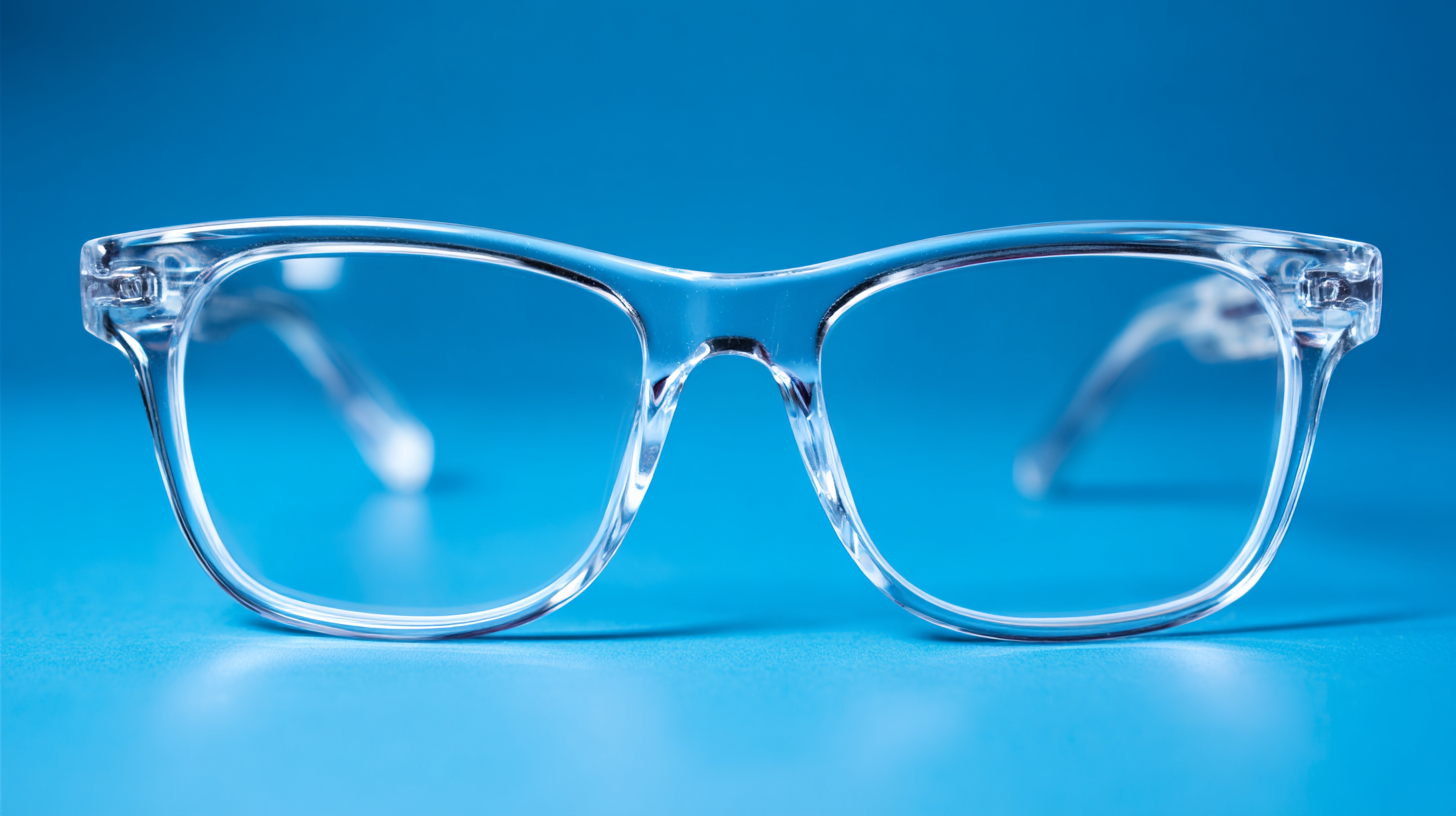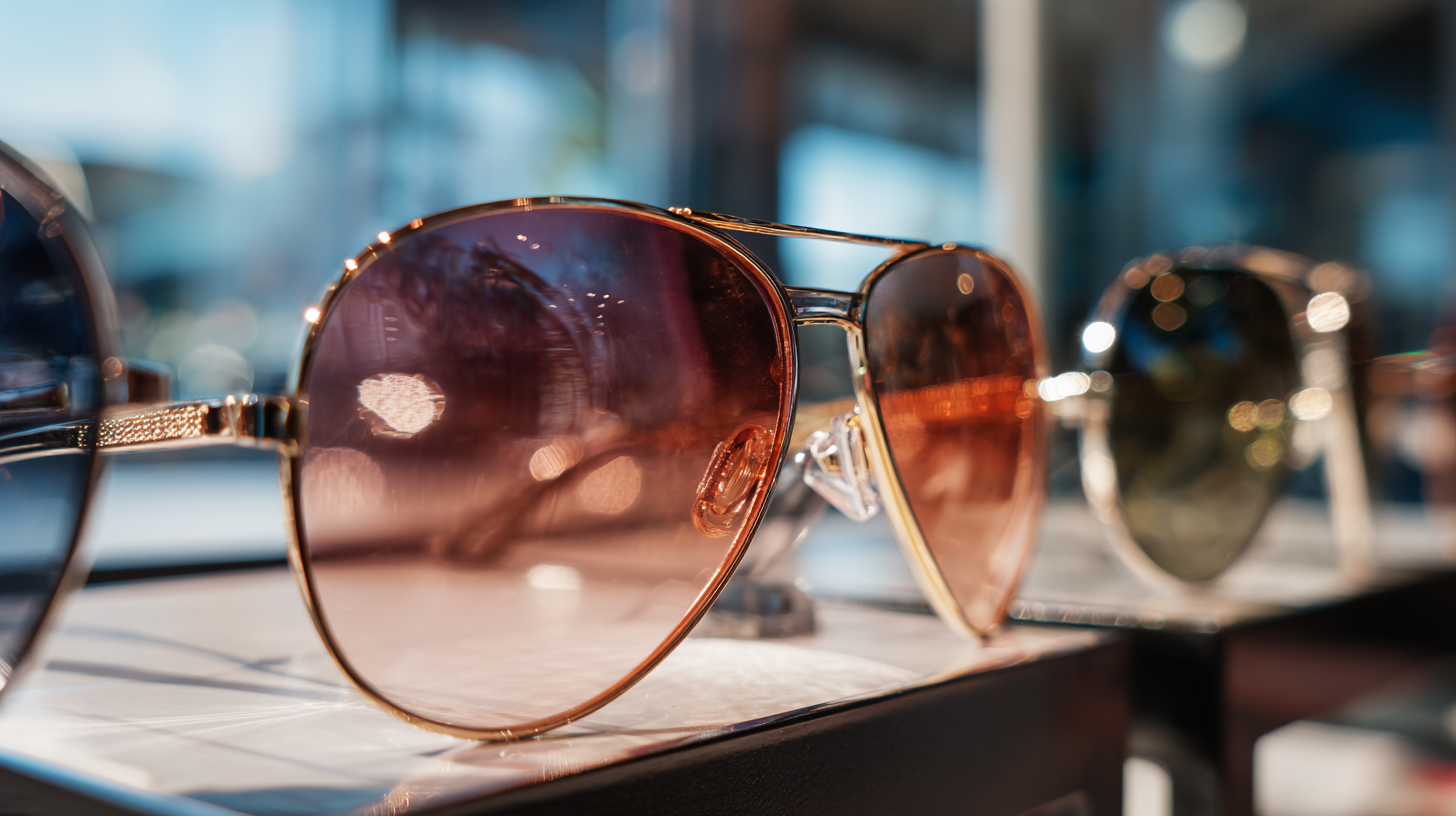As the eyewear industry continues to evolve, the demand for vision clarity is at an all-time high, leading to the increasing popularity of High Index Lenses. According to recent market research, the global optical lens market is projected to reach $26 billion by 2025, with High Index Lenses representing a significant portion of this growth due to their slim profile and lightweight design.

These lenses, typically with a refractive index of 1.67 or higher, provide enhanced visual acuity for individuals with stronger prescriptions, allowing for a more comfortable and aesthetically pleasing eyewear experience. Furthermore, a survey conducted by the Vision Council revealed that 58% of consumers prioritize lens thickness and weight when selecting eyewear, indicating a clear shift towards High Index Lenses as an optimal choice.
As technology advances and consumer preferences shift, understanding the benefits and features of High Index Lenses becomes essential for maximizing vision clarity and enhancing overall eyewear choices.
The eyewear industry is experiencing a notable shift toward high index lenses, reflecting a growing demand for thinner, lighter, and more aesthetically pleasing optical solutions. According to the Vision Council's 2022 report, nearly 30% of consumers now prefer high index lenses for their eyewear choices, a significant increase from previous years. This rise can be attributed to advancements in lens technology, allowing for higher refractive indices without compromising optical clarity. For individuals with high prescriptions, these lenses can dramatically reduce the thickness and weight of glasses, enhancing comfort and style.
Moreover, the global high index lens market is projected to grow at a CAGR of 6.3% from 2023 to 2030, as stated in a recent market analysis by Research and Markets. This trend is further fueled by the increasing awareness of vision health and the desire for enhanced visual performance among consumers. High index lenses not only offer superior aesthetics but also provide better peripheral vision and reduced distortion. As eyewear brands innovate and expand their high index lens offerings, consumers are increasingly making informed decisions, prioritizing both function and fashion in their eyewear choices.
High index lenses have become increasingly popular in eyewear due to their ability to provide superior vision clarity, especially for individuals with stronger prescriptions. These lenses are crafted from materials that have a higher refractive index than standard plastic lenses, allowing them to bend light more effectively. As a result, wearers experience thinner and lighter lenses, which not only enhances comfort but also boosts aesthetic appeal. According to the Vision Council’s report, nearly 40% of eyewear consumers are now opting for high index lenses, indicating a significant shift towards prioritizing both style and functionality in eyewear choices.
One key benefit of high index lenses is their ability to reduce distortion and enhance peripheral vision, which is critical for those with high prescription needs. For instance, a report from the American Academy of Ophthalmology highlights that high index materials can offer up to 20% better clarity than traditional lenses, particularly in stronger prescriptions. Moreover, these lenses often come with additional coatings to improve scratch resistance and UV protection, further contributing to their long-term value.
Tips for choosing high index lenses include considering your prescription strength—those with stronger prescriptions should definitely explore high index options for improved aesthetics and weight reduction. Also, don’t overlook anti-reflective coatings; they can significantly improve visual comfort by reducing glare, especially in bright conditions. Lastly, always consult with your eye care professional to determine the best lens material based on your lifestyle and vision needs.
High index lenses have revolutionized the eyewear market, offering a sleek alternative to traditional lenses. These innovative lenses are crafted from materials that refract light more efficiently, allowing for thinner and lighter designs without compromising on vision clarity. In contrast, traditional lenses, typically made from plastic or polycarbonate, tend to be thicker and bulkier, particularly for individuals with significant prescriptions. This difference not only affects comfort but can also influence the aesthetic appeal of eyeglasses.
When comparing high index lenses to their traditional counterparts, one of the standout advantages is the reduction in lens weight and thickness. For wearers with stronger prescriptions, high index lenses provide a more streamlined look, which is especially beneficial for those who prefer low-profile eyewear. Furthermore, high index lenses also offer enhanced optical performance by reducing distortion and improving peripheral vision. While they may come at a higher price point, the benefits of increased comfort and enhanced visual clarity make high index lenses a worthy investment for many users looking to improve their eyewear experience.
| Lens Type | refractive Index | Thickness (mm) | Weight (g) | Price Range (USD) | UV Protection |
|---|---|---|---|---|---|
| High Index Lenses | 1.74 | 1.6 | 30 | 150 - 300 | Yes |
| Mid Index Lenses | 1.60 | 2.0 | 35 | 100 - 200 | Yes |
| Standard Lenses | 1.50 | 3.0 | 40 | 50 - 100 | No |
When it comes to selecting high index lenses, understanding your specific prescription needs is crucial. High index lenses are designed to provide sharper vision while being thinner and lighter than traditional lenses. For individuals with stronger prescriptions, such as those requiring -6.00 diopters or higher, choosing a high index lens with a refractive index of 1.67 or above can significantly enhance visual comfort and aesthetic appeal. These lenses reduce the curvature and thickness, making them an appealing choice for fashion-forward individuals seeking both style and functionality.

On the other hand, those with milder prescriptions may opt for high index lenses with a refractive index of 1.56. These lenses still offer benefits like reduced weight and improved optical performance compared to standard options. It's essential to consult with an eye care professional to determine which high index lens best suits your vision needs. They can assess factors such as lens thickness, frame selection, and personal lifestyle requirements to recommend the most appropriate lens type. This tailored approach ensures that you receive optimal clarity and comfort, making your eyewear choice a practical investment in your overall vision health.
 The eyewear industry is experiencing a remarkable transformation with the advancement of high index lens technology, which promises to enhance vision clarity for users with significant refractive errors. These lenses are crafted from advanced materials that allow for thinner and lighter designs without compromising optical performance. As a result, wearers can enjoy a more comfortable experience with frames that flatter their facial features, making high index lenses a top choice for fashion-conscious individuals.
The eyewear industry is experiencing a remarkable transformation with the advancement of high index lens technology, which promises to enhance vision clarity for users with significant refractive errors. These lenses are crafted from advanced materials that allow for thinner and lighter designs without compromising optical performance. As a result, wearers can enjoy a more comfortable experience with frames that flatter their facial features, making high index lenses a top choice for fashion-conscious individuals.
In the coming years, we can expect further innovations in high index lens technology. Manufacturers are focusing on improving coatings that reduce glare and increase scratch resistance, making lenses more durable. Additionally, there is a growing trend towards integrating smart technologies, such as augmented reality capabilities, into eyewear. This will not only enhance visual clarity but also offer more functionality to users, merging the boundaries between traditional eyewear and cutting-edge tech.
Tips for Choosing High Index Lenses: When considering high index lenses, evaluate your prescription strength. Typically, those with stronger prescriptions will benefit the most from these lenses. Opt for anti-reflective coatings to enhance clarity and reduce glare. Lastly, don’t hesitate to consult with your optician about the latest innovations to ensure you’re making the best choice for your vision needs.







